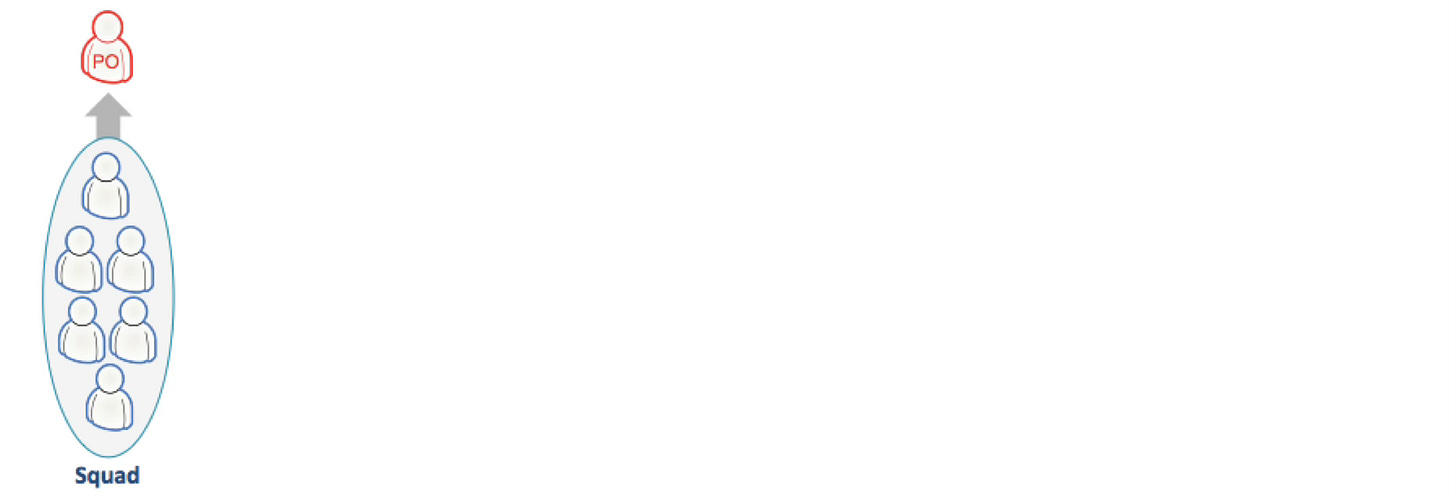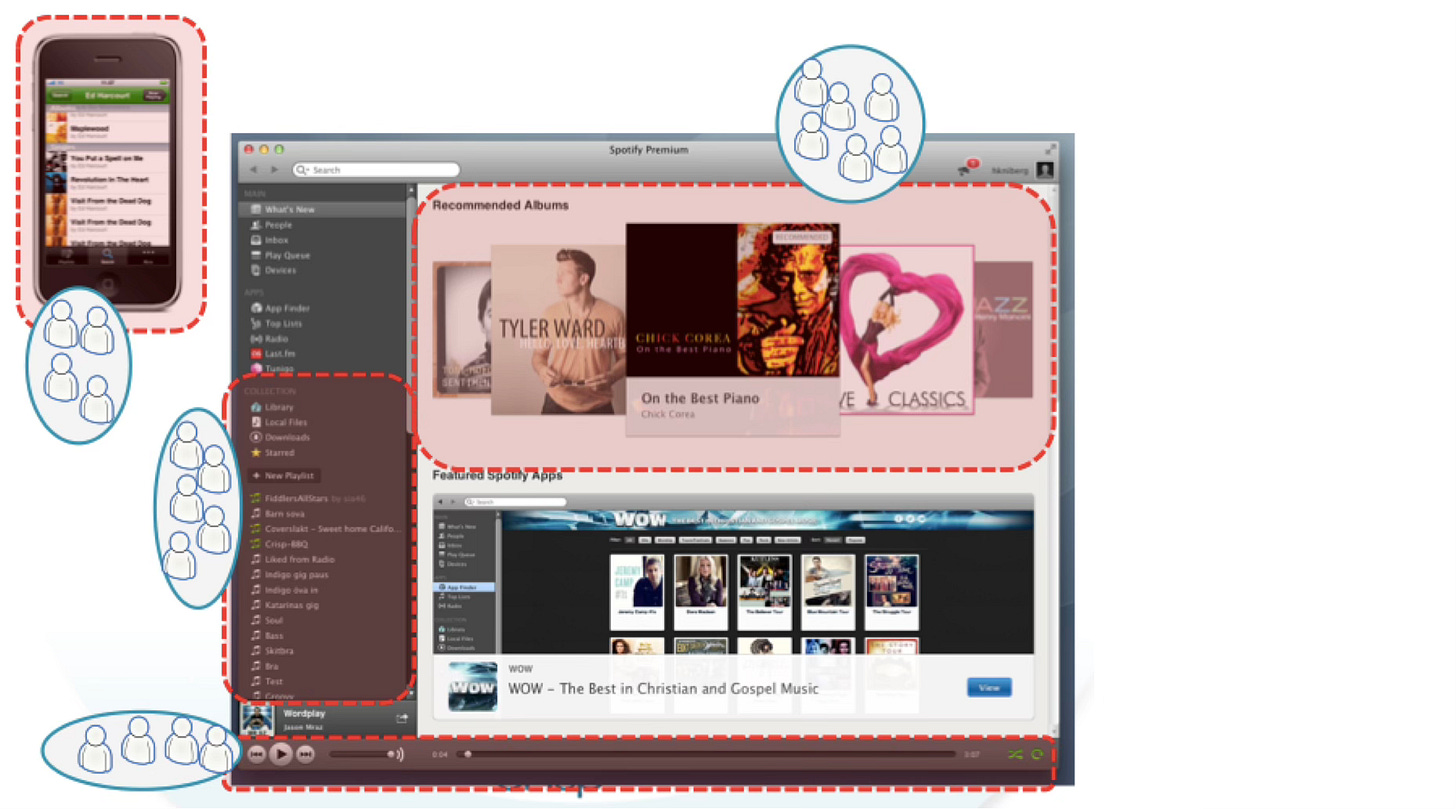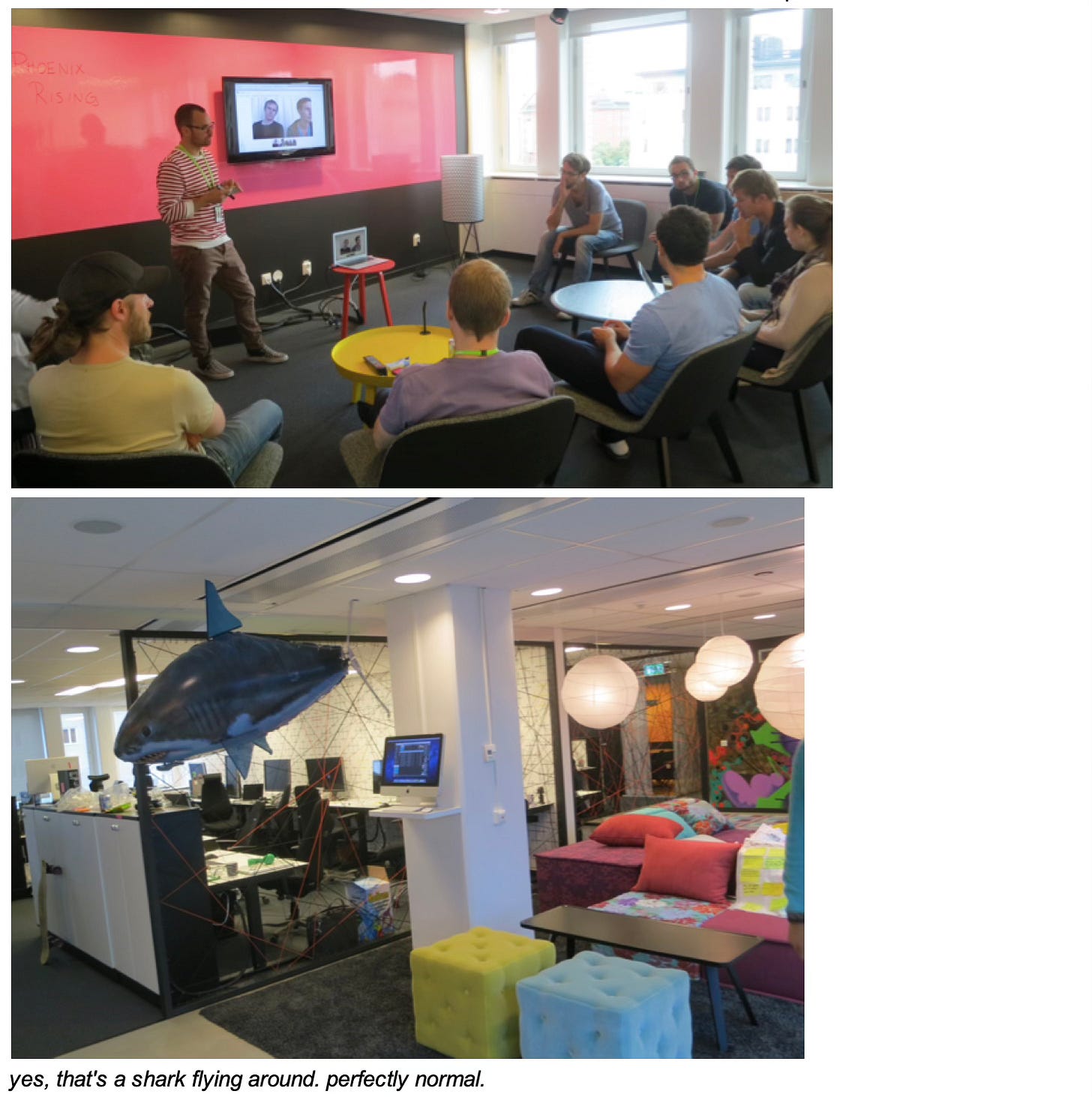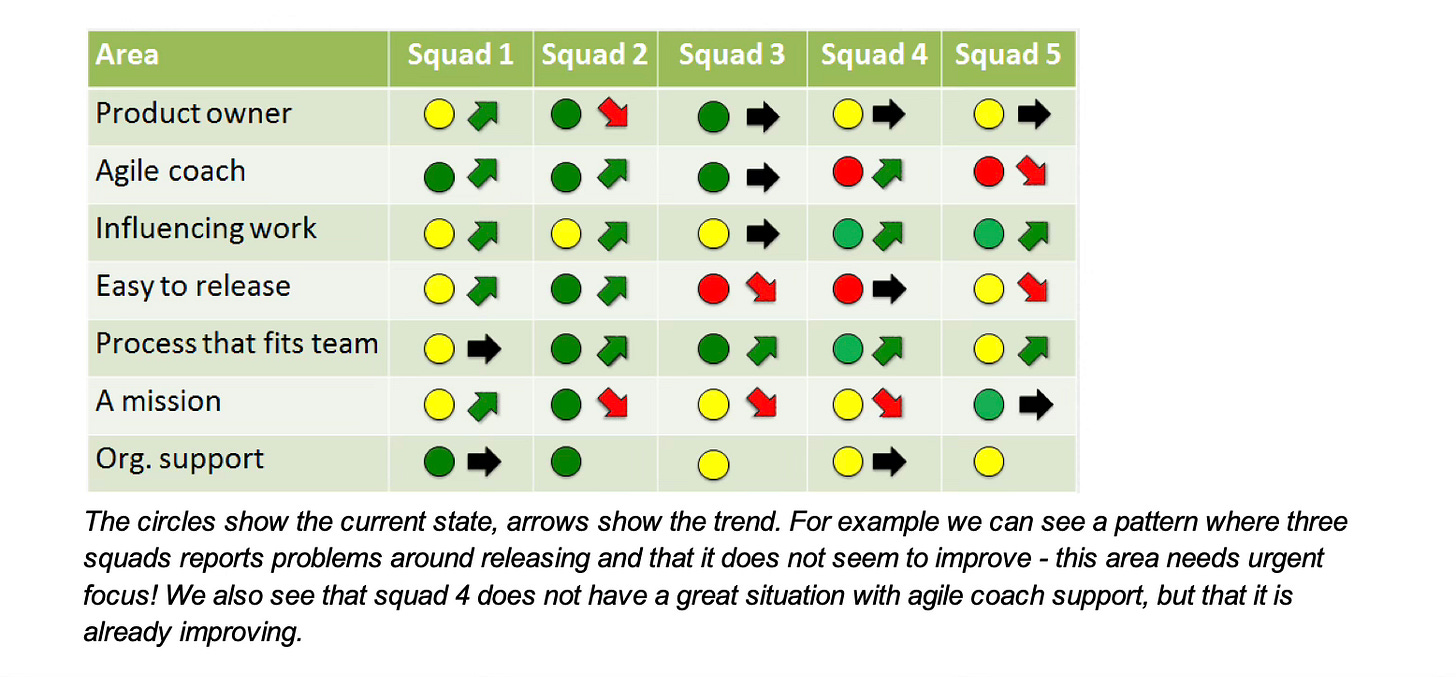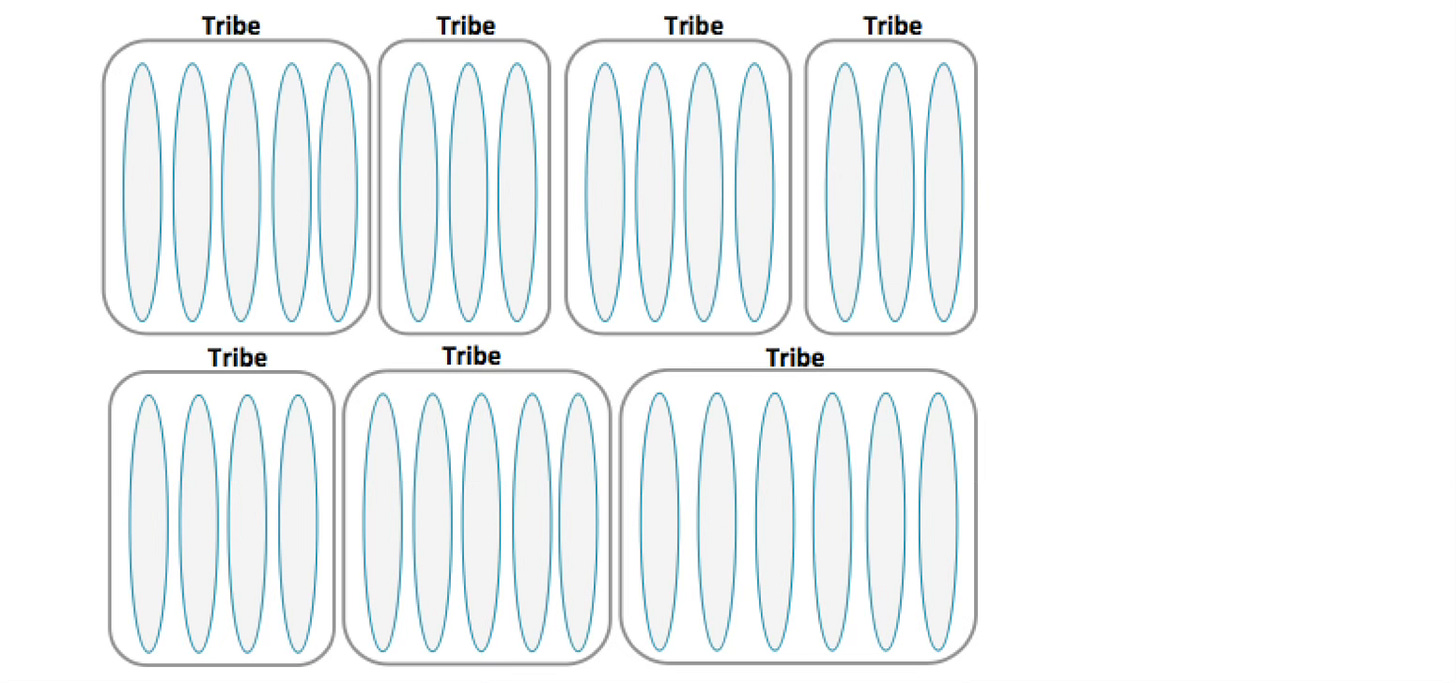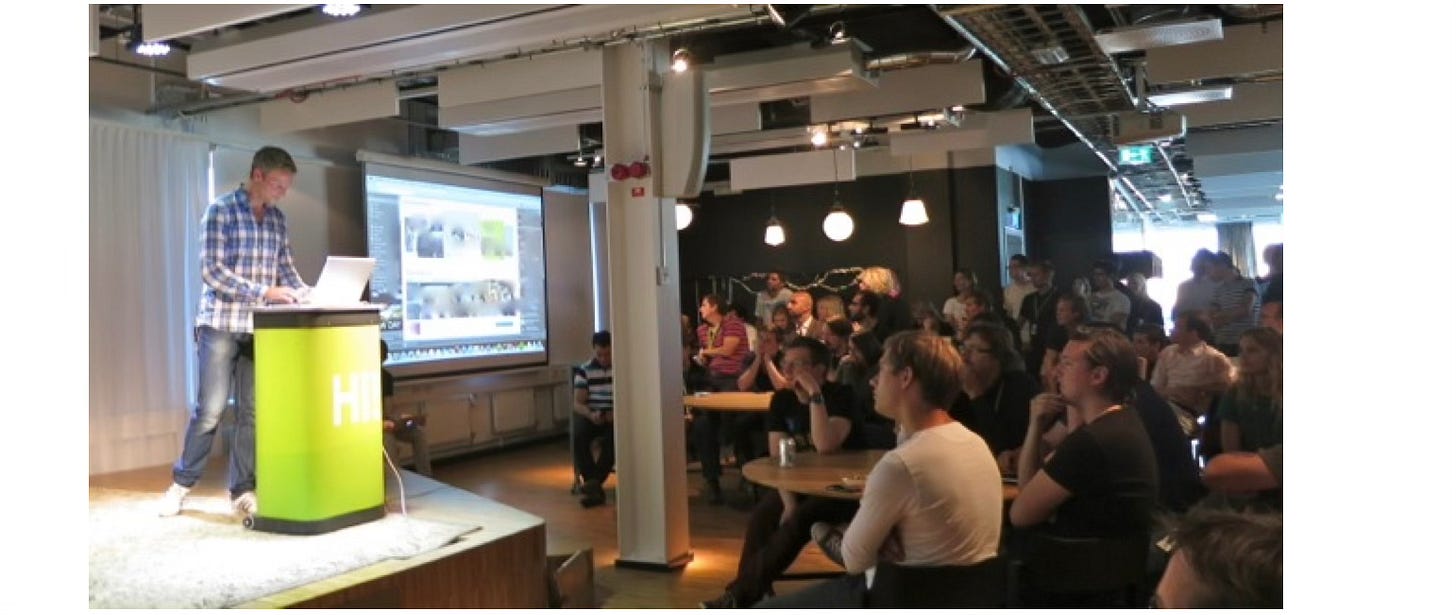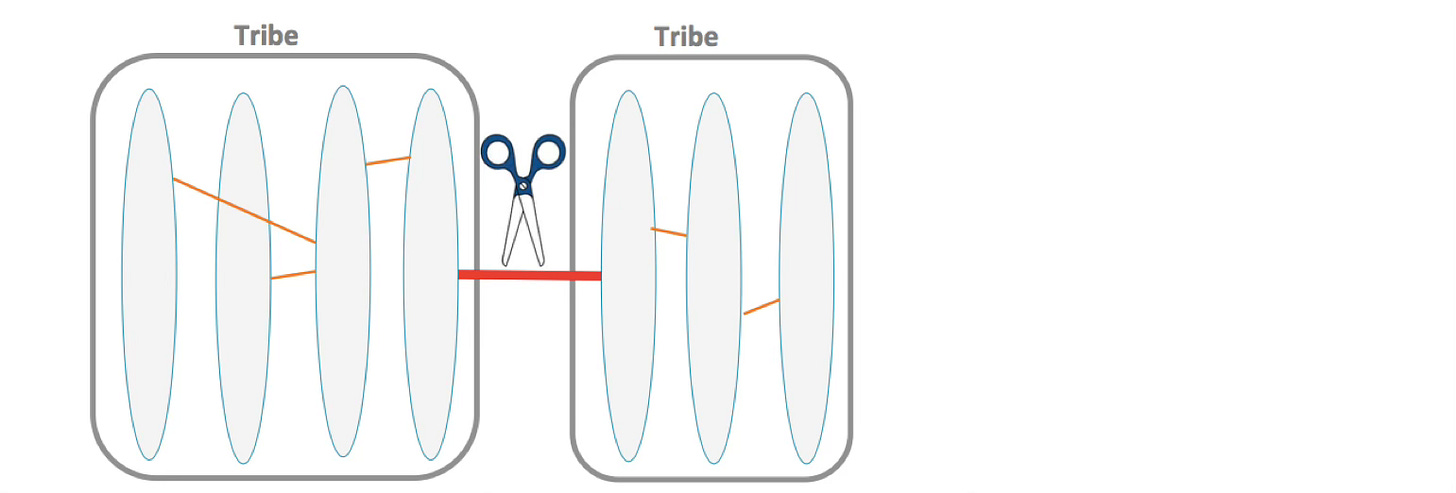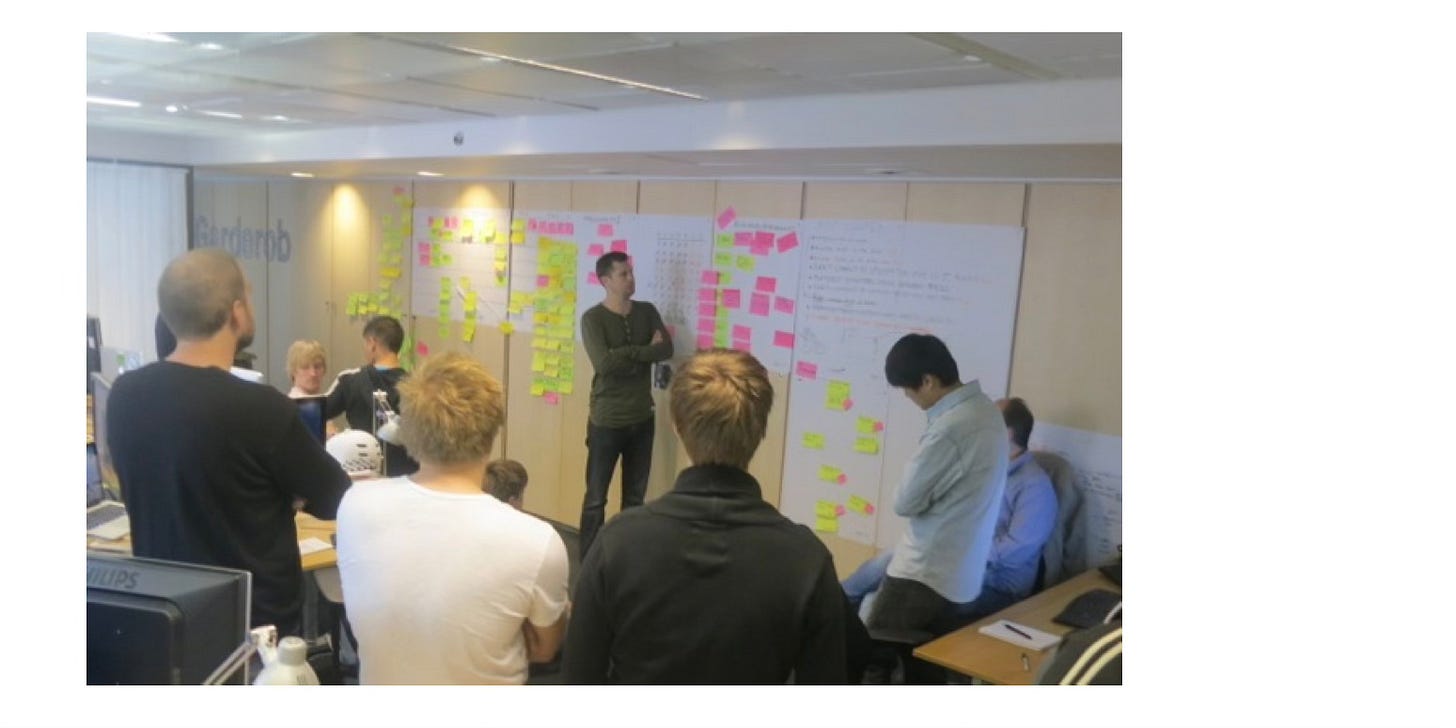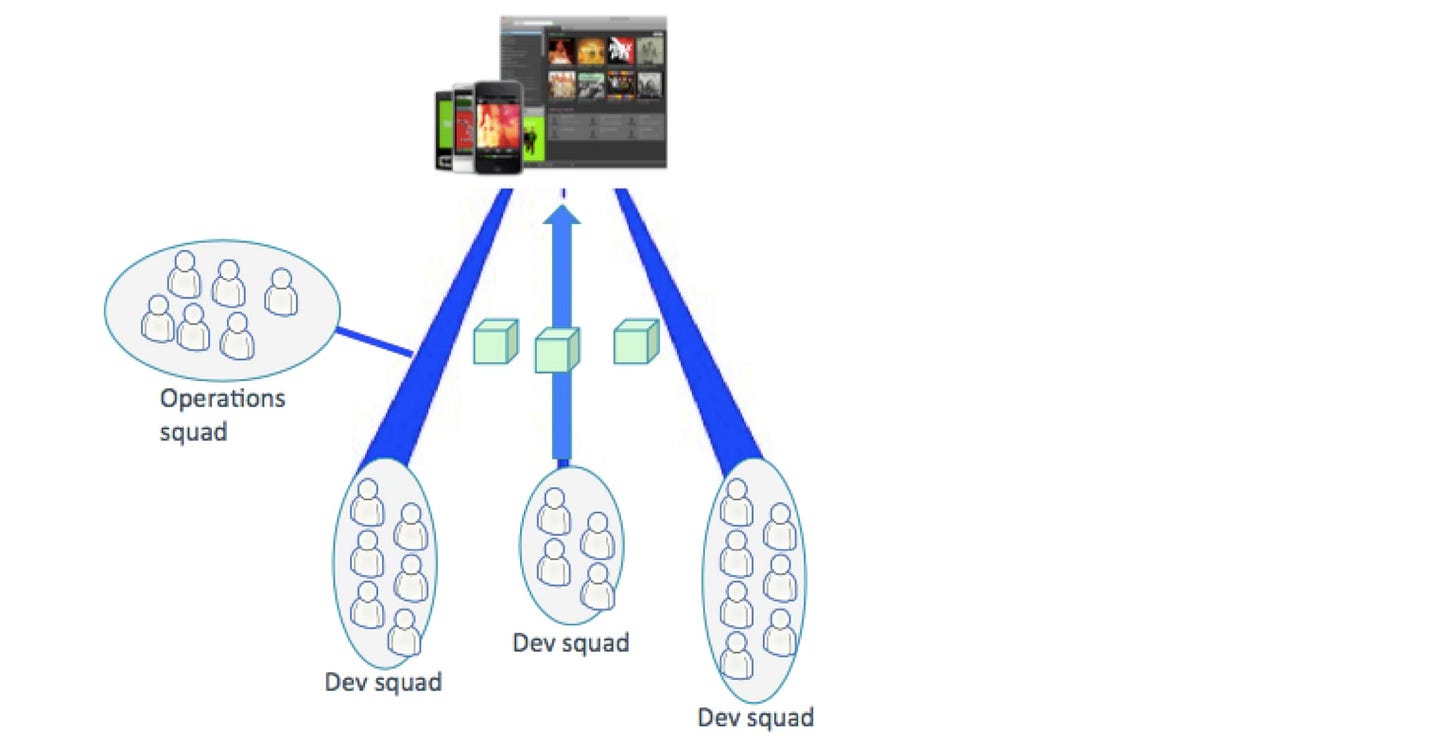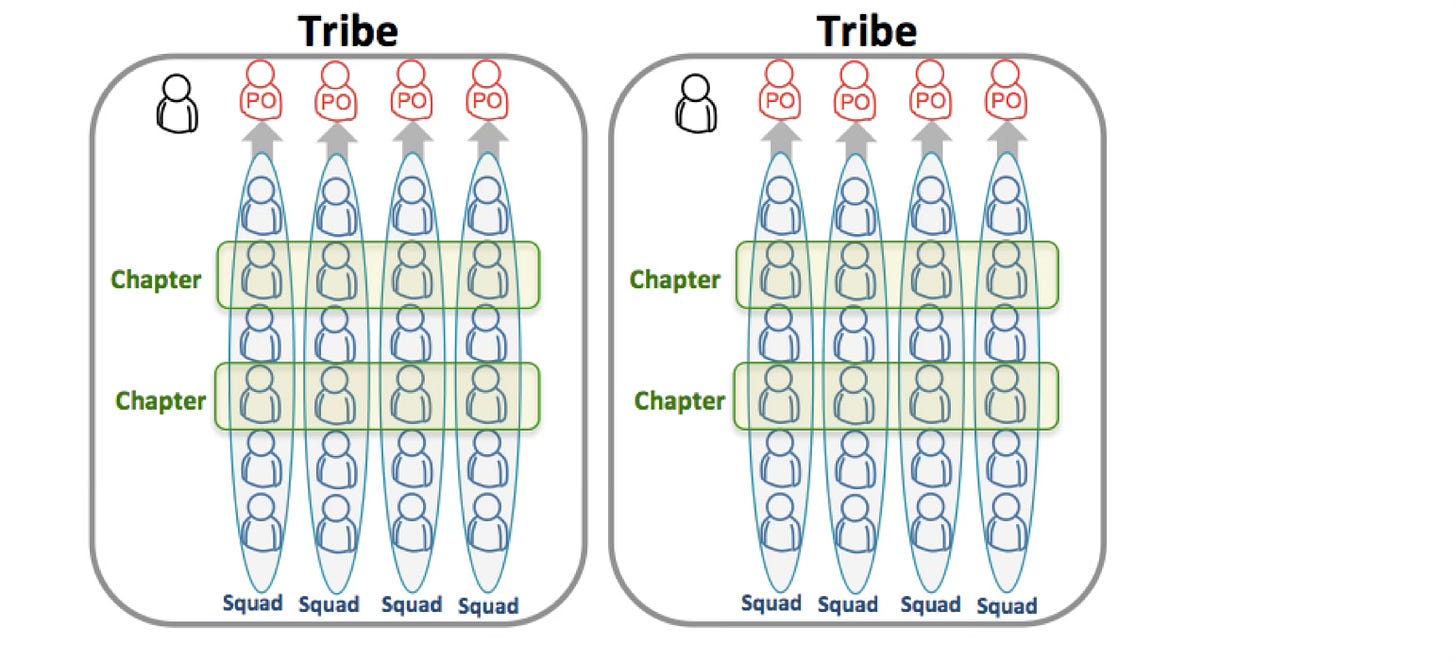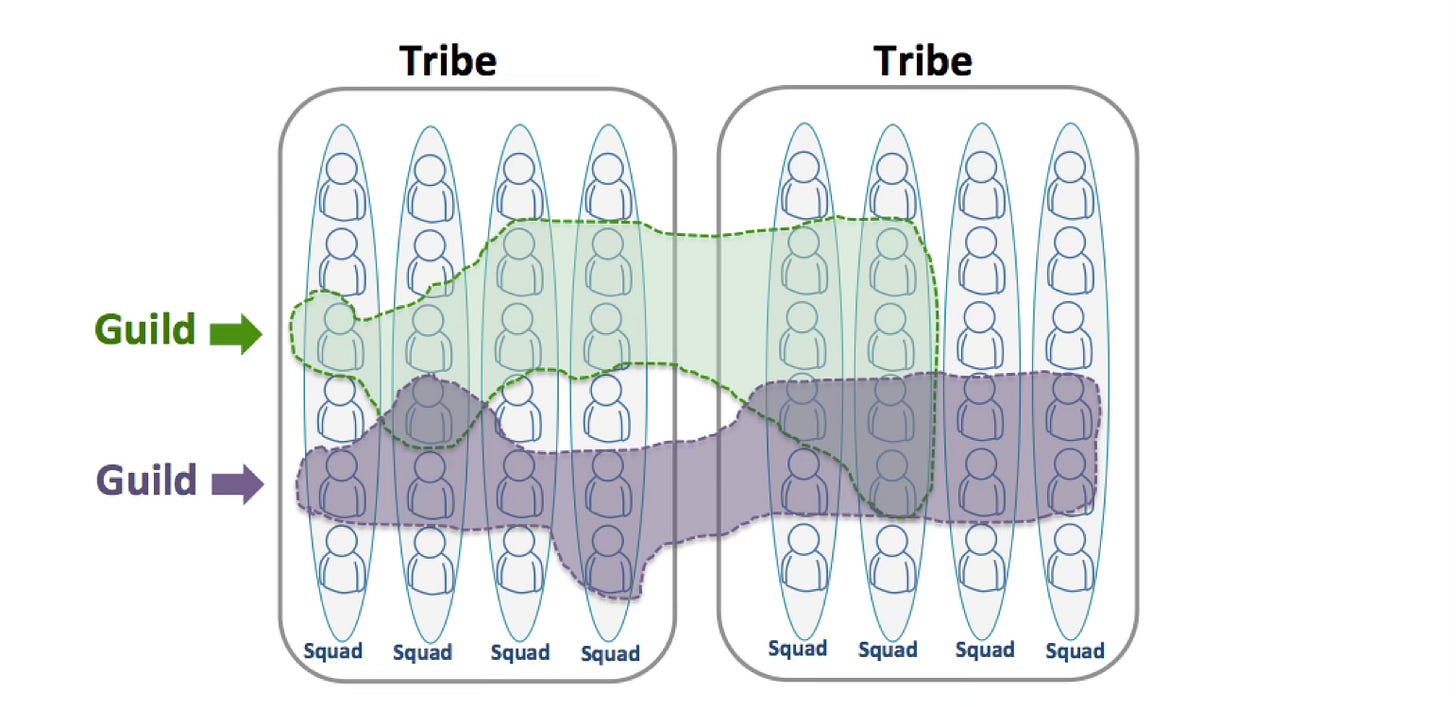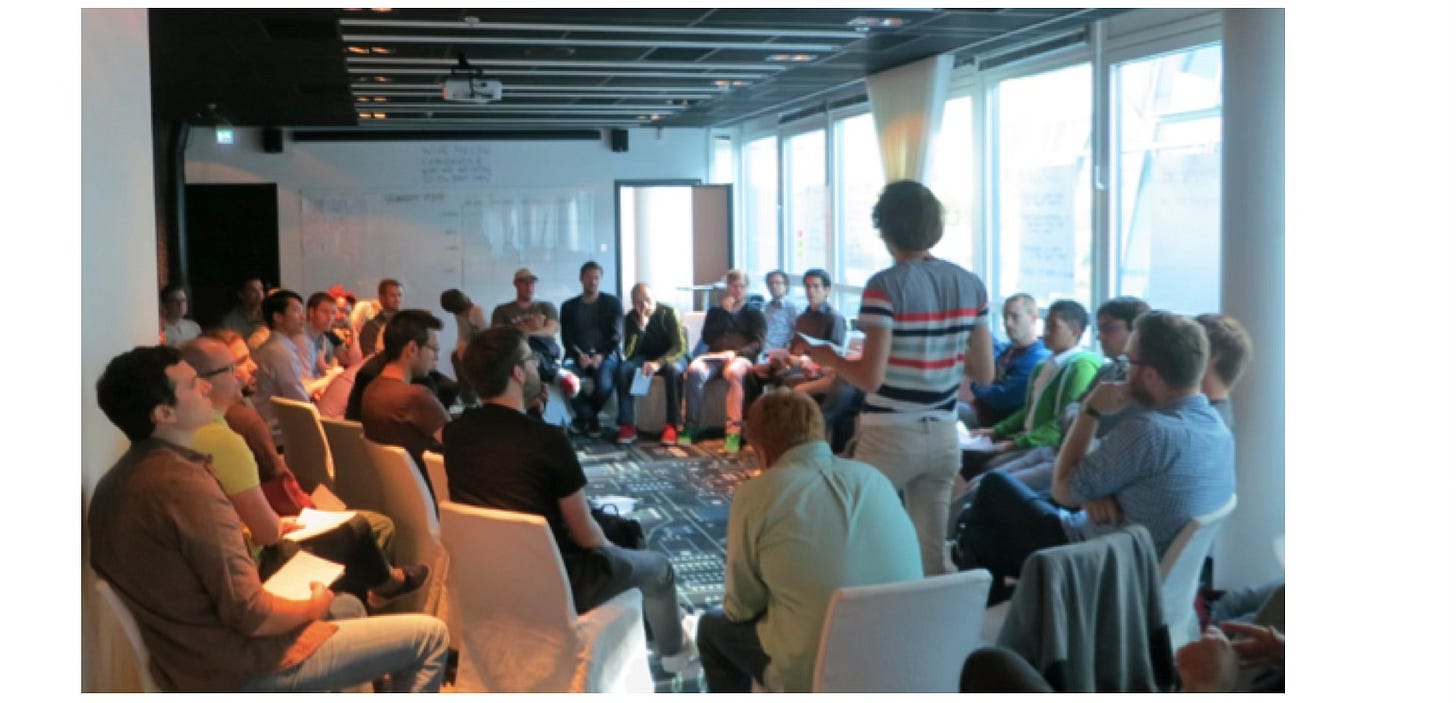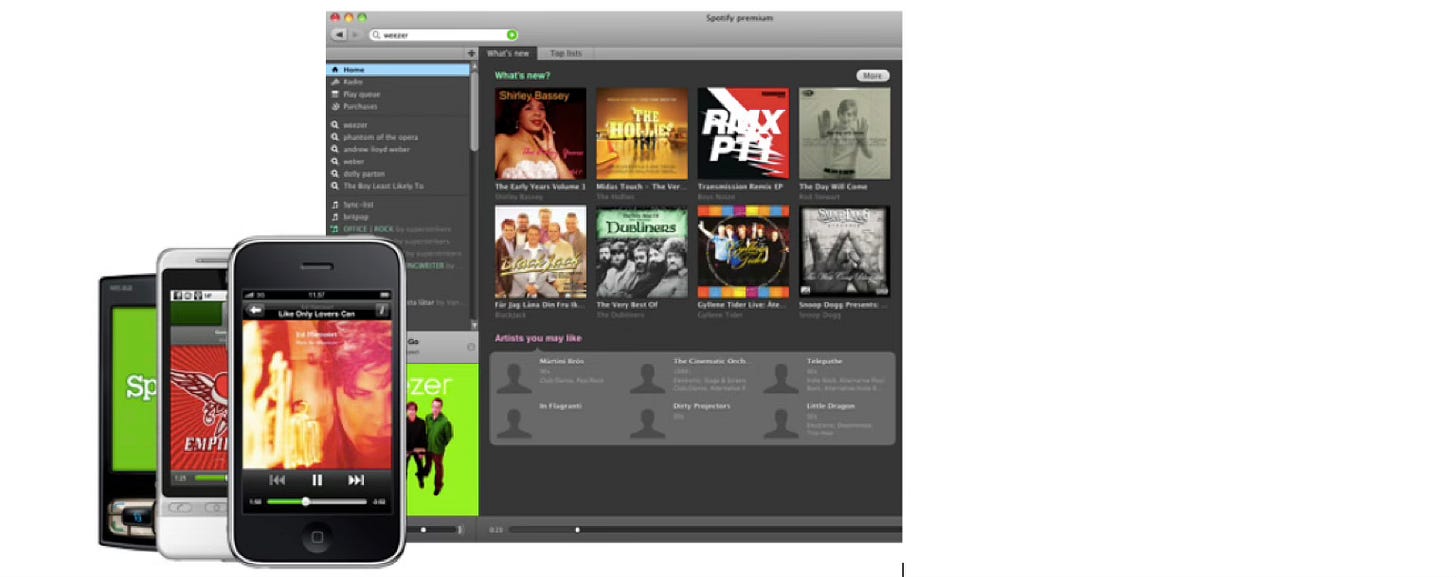How Spotify Built a Data-Driven Culture: A Case Study on Scalability, Experimentation, and Innovation
Unlocking the Power of Data: How Spotify’s Engineering and Product Teams Use Data to Drive Growth and Personalization
Introduction
Spotify has become a global leader in music streaming, not just because of its vast music library but also due to its sophisticated data-driven culture. This case study explores how Spotify leverages data to enhance user experience, scale its platform, and foster continuous innovation.
1. Building a Data-First Mindset
From its early days, Spotify recognized that data was more than just a byproduct—it was the foundation for decision-making. The company invested heavily in a culture where data is accessible, understandable, and actionable across teams. Engineers, product managers, and marketers all rely on data-driven insights to shape their strategies.
Key Takeaways:
Democratizing data access across teams
Training employees to interpret and utilize data effectively
Encouraging a culture of curiosity and experimentation
2. Experimentation at Scale: The Power of A/B Testing
Spotify runs thousands of A/B tests every year to improve user engagement and optimize its platform. These experiments help refine everything from playlist recommendations to app interface changes.
Example: Spotify’s Discover Weekly playlist, one of its most successful features, was a result of continuous experimentation and machine learning-driven optimization.
Key Takeaways:
A/B testing as a core decision-making tool
Rapid iteration cycles for product improvements
Balancing innovation with user feedback
3. Machine Learning and Personalization
Spotify’s ability to recommend music with precision is powered by its sophisticated machine learning models. By analyzing listening behaviors, user interactions, and contextual data, Spotify delivers hyper-personalized experiences.
Example: The “Wrapped” campaign, an annual feature that gives users a summary of their listening habits, is a prime example of leveraging data storytelling for engagement.
Key Takeaways:
Using AI/ML to enhance personalization
Continuous refinement of recommendation algorithms
Creating engaging user experiences with data storytelling
4. Scaling Data Infrastructure for a Growing Platform
As Spotify grew from a small startup to a platform serving over 500 million users, its data infrastructure needed to evolve. The company built a robust, scalable architecture to handle massive amounts of data while maintaining high performance.
Example: Transitioning from monolithic architecture to a microservices-based system enabled better scalability and agility.
Key Takeaways:
Investing in scalable cloud-based data infrastructure
Adopting microservices for flexibility and efficiency
Handling large-scale data processing with technologies like Apache Kafka and Google Cloud
5. Data-Driven Decision Making in Product Development
Spotify integrates data into every aspect of its product development cycle. From identifying user pain points to predicting market trends, data insights play a crucial role in prioritizing new features and improvements.
Example: Spotify’s decision to invest in podcasts was heavily influenced by data showing a rising interest in non-music content among users.
Key Takeaways:
Aligning product strategy with data insights
Predictive analytics for identifying new opportunities
Enhancing user experience through behavioral analysis
6. The Role of Leadership in Spotify’s Data Success
Spotify’s leadership champions a data-driven culture by encouraging transparency, collaboration, and innovation. Their approach ensures that teams have both the tools and autonomy to experiment and iterate.
Example: Spotify’s “Squads, Tribes, Chapters, and Guilds” organizational model fosters cross-functional collaboration and aligns teams toward data-driven goals.
Key Takeaways:
Leadership fostering a culture of innovation
Encouraging cross-functional collaboration
Empowering teams with data autonomy
Understanding Spotify's Agile Scaling Model: A Comprehensive Guide
This part of the article delves into Spotify's Agile Scaling Model, exploring key concepts such as Squads, Tribes, Chapters, Guilds, and other structural elements that have helped Spotify maintain its culture of agility and innovation.
The Core Elements of Spotify’s Agile Model
1. Squads: The Fundamental Building Blocks
The basic unit of development at Spotify is the Squad.
Squads are small, cross-functional, autonomous teams responsible for a specific aspect of the product or service. Each squad follows Agile principles, working in sprints or iterations to deliver value incrementally.
Key Characteristics of Squads:
Autonomy: Squads have the freedom to decide how they work, what methodologies to use, and how to prioritize tasks.
Cross-functional: A squad includes developers, designers, product managers, and other necessary roles to achieve its objectives.
End-to-end Responsibility: Squads own a particular feature or service from development to deployment and maintenance.
Embedded Product Owner: A Product Owner (PO) helps guide the squad in aligning with business objectives while ensuring customer needs are met.
Because each squad sticks with one mission and one part of the product for a long time, they can really become experts in that area - for example what it means to build an awesome radio experience.
Most squads have an awesome workspace including a desk area, a lounge area, and a personal "huddle" room. Almost all walls are whiteboards. They have the best collaboration space!
A squad also has access to an agile coach, who helps them evolve and improve their way of working. The coaches run retrospectives, sprint planning meetings, do 1-on-1 coaching, etc.
Ideally each squad is fully autonomous with direct contact with their stakeholders, and no blocking dependencies to other squads. Basically a mini-startup. With over 30 teams, that is a challenge! They have come a long way, but there is still plenty of room for improvement.
To aid in this, they run a quarterly survey with each squad. This helps focus their improvement efforts and find out what kind of organizational support is needed.
Here’s a visual summary of one such survey, showing 5 squads within a tribe:
● Product owner - The squad has a dedicated product owner that prioritizes the work and takes both business value and tech aspects into consideration.
● Agile coach - The squad has an agile coach that helps them identify impediments and coaches them to continuously improve their process.
● Influencing work - Each squad member can influence his/her work, be an active part in planning and choose which tasks to work on. Every squad member can spend 10% of his/her time on hack days.
● Easy to release - The squad can (and does!) get stuff live with minimal hassle and sync.
● Process that fits the team - The squad feels ownership of their process and continuously improves it.
● Mission - The squad has a mission that everyone knows and cares about, and stories on the backlog are related to the mission.
● Organizational support - The squad knows where to turn to for problem solving support, for technical issues as well as “soft” issues.
2. Tribes: Connecting Squads with Common Missions
A Tribe is a collection of Squads that work on related aspects of the product. Tribes ensure alignment and collaboration between squads while maintaining a degree of independence.
The tribe can be seen as the “incubator” for the squad mini-startups, and have a fair degree of freedom and autonomy. Each tribe has a tribe lead who is responsible for providing the best possible habitat for the squads within that tribe. The squads in a tribe are all physically in the same office, normally right next to each other, and the lounge areas nearby promote collaboration between the squads.
Tribes are sized based on the concept of the “Dunbar number”, which says that most people cannot maintain a social relationship with more than 100 people or so (the number is actually larger for groups that are under intense survival pressure, which isn’t really the case at Spotify, believe it or not...). When groups get too big, they start seeing more things like restrictive rules, bureaucracy, politics, extra layers of management, and other waste.
So tribes are designed to be smaller than 100 people or so.
Tribes hold gatherings on a regular basis, an informal get-together where they show the rest of the tribe (or whoever shows up) what they are working on, what they have delivered and what others can learn from what they are currently doing. This includes live demos of working software, new tools and techniques, cool hack-day projects, etc.
Key Characteristics of Tribes:
Leadership by a Tribe Lead: A Tribe Lead ensures coordination among squads and facilitates knowledge sharing.
Size Considerations: Typically, a Tribe consists of 40-150 people, following Dunbar’s number principle to maintain effective collaboration.
Cross-Squad Collaboration: Encourages best practice sharing and consistency in development.
Squad dependencies
With multiple squads there will always be dependencies. Dependencies are not necessarily bad - squads sometimes need to work together to build something truly awesome. Nevertheless, their goal is to have squads be as autonomous as possible, especially minimizing dependencies that are blocking or slowing a squad down.
To aid in this, they regularly ask all their squads which other squads they depend on, and to what extent those dependencies are blocking or slowing the squad down.
Here’s an example:
They then discuss ways to eliminate the problematic dependencies, especially blocking and cross-tribe dependencies. This often leads to reprioritization, reorganization, architectural changes or technical solutions.
The survey also helps them see patterns around how squads depend on each other - for example, that more and more squads seem to be slowed down by operations. They use a simple graph to track how the various types of dependencies increase or decrease over time.
Scrum has a practice called “scrum of scrums”, a synchronization meeting where one person from each team meets to discuss dependencies. They don’t usually do scrum of scrums at Spotify, mainly because most of the squads are fairly independent and don’t need such a coordination meeting.
Instead, scrum of scrums happens “on demand”. For example they recently had a large project that required the coordinated work of multiple squads for a few months.
To make this work, the teams had a daily sync meeting where they identified and resolved dependencies between the squads, and used a board with sticky notes to keep track of unresolved dependencies.
A common source of dependency issues at many companies is development vs operations. Most companies have some kind of a handoff from dev to ops, with associated friction and delays.
At Spotify there is a separate operations team, but their job is not to make releases for the squads - their job is to give the squads the support they need to release code themselves; support in the form of infrastructure, scripts, and routines. They are, in a sense, “building the road to production”.
It’s an informal but effective collaboration, based on face-to-face communication rather than detailed process documentation.
3. Chapters: Aligning Functional Expertise
While Squads operate independently, functional alignment across similar expertise areas is crucial. Chapters are groups of people from different squads who share a common discipline, such as backend engineering, UX design, or quality assurance.
Each chapter meets regularly to discuss their area of expertise and their specific challenges - for example the testing chapter, the web developer chapter or the backend chapter.
The chapter lead is line manager for his chapter members, with all the traditional responsibilities such as developing people, setting salaries, etc. However, the chapter lead is also part of a squad and is involved in the day-to-day work, which helps him stay in touch with reality.
Now, reality is always messier than pretty pictures like the one above. For example, chapter members are not evenly distributed across the squads; some squads have lots of web developers, some have none. But the picture should give you the general idea.
Key Characteristics of Chapters:
Led by a Chapter Lead: The Chapter Lead is usually a senior practitioner who mentors and supports members while ensuring technical consistency across squads.
Skill Development: Promotes knowledge sharing and professional growth within a functional domain.
Standardization: Ensures best practices and guidelines are followed across teams.
4. Guilds: Voluntary Knowledge Sharing Groups
Guilds are communities of interest that cut across squads and tribes, enabling individuals passionate about a particular topic to collaborate and share knowledge.
Key Characteristics of Guilds:
Voluntary Membership: Anyone in the organization can join a Guild based on their interests.
Wide Knowledge Sharing: Covers topics such as DevOps, Agile coaching, security, or machine learning.
No Formal Hierarchy: Unlike Chapters, Guilds have no fixed leadership structure; they are driven by shared passion and peer learning.
As an example of guild work, they recently had a “Web Guild Unconference”, an open space event where all web developers at Spotify gathered up in Stockholm to discuss challenges and solutions within their field.
Another example is the agile coach guild. The coaches are spread all over the organization, but share knowledge continuously and meet regularly to collaborate on the high level organizational improvement areas, which they track on an improvement board.
5. Tribe Leadership and Other Supporting Roles
In addition to the above structures, Spotify’s model includes leadership roles that support team autonomy while ensuring alignment:
Tribe Lead: Manages the overall direction of a Tribe and fosters collaboration between squads.
Agile Coach: Helps squads adopt and improve Agile practices.
Product Owner: Guides squads in prioritizing work that aligns with customer needs and business goals.
Chapter Lead: Ensures technical excellence and professional development within Chapters.
In many matrix organizations people with similar skills are “pooled” together into functional departments, and “assigned” to projects, and “report to” a functional manager.
Spotify rarely does any of this. Their matrix is weighted towards delivery.
That is, people are grouped into stable co-located squads, where people with different skill sets collaborate and self-organize to deliver a great product. That’s the vertical dimension in the matrix, and it is the primary one since that is how people are physically grouped and where they spend most of their time.
The horizontal dimension is for sharing knowledge, tools, and code. The job of the chapter lead is to facilitate and support this.
In matrix terms, think of the vertical dimension as “what” and the horizontal dimension as “how”. The matrix structure ensures that each squad member can get guidance on “what to build next” as well as “how to build it well”.
This matches the “professor and entrepreneur” model recommended by Mary and Tom Poppendieck. The PO is the “entrepreneur” or “product champion”, focusing on delivering a great product, while the chapter lead is the “professor” or “competency leader”, focusing on technical excellence.
There is a healthy tension between these roles, as the entrepreneur tends to want to speed up and cut corners, while the professor tends to want to slow down and build things properly. Both aspects are needed, that’s why it is a “healthy” tension.
Advantages of Spotify’s Agile Model
Spotify’s approach provides numerous benefits, making it an attractive model for scaling Agile in large organizations:
Flexibility & Autonomy: Squads have the freedom to experiment, innovate, and make decisions quickly.
Enhanced Collaboration: Tribes, Chapters, and Guilds ensure effective knowledge sharing and coordination without excessive bureaucracy.
Continuous Improvement: The Agile mindset is embedded, allowing teams to evolve and optimize their ways of working over time.
Employee Engagement: The decentralized approach empowers employees, fostering motivation and ownership of work.
Challenges and Considerations
While Spotify’s Agile model is widely praised, it also presents challenges when applied to different organizational contexts:
Autonomy vs. Alignment: Balancing squad independence with broader company alignment can be difficult.
Scaling Complexity: As organizations grow, maintaining the informal and flexible nature of the model becomes challenging.
Dependency Management: Ensuring smooth cross-squad dependencies without traditional hierarchical control requires strong communication.
Not a One-Size-Fits-All Solution: The model worked for Spotify but may need adaptations for different business structures and cultures.
What about architecture?
Spotify technology is highly service-oriented. They have over 100 distinct systems, and each can be maintained and deployed separately. This includes backend services such as playlist management or search or payment, and clients such as the iPad player, and specific components such as the radio, or the “what’s new” section of the music player.
Technically, anyone is allowed to edit any system. Since the squads are effectively feature teams, they normally need to update multiple systems to get a new feature into production.
The risk with this model is that the architecture of a system gets messed up if nobody focuses on the integrity of the system as a whole.
To mitigate this risk, they have a role called “System Owner”. All systems have a system owner, or a pair of system owners (they encourage pairing). For operationally critical systems, the System Owner is a Dev-Ops pair – that is, one person with a developer perspective and one person with an operations perspective.
The system owner is the “go to” person(s) for any technical or architectural issues related to that system.
He is a coordinator and guides people who code in that system to ensure that they don’t stumble over each other. He/she focuses on things like quality, documentation, technical debt, stability, scalability, and release process.
The System Owner is not a bottleneck or ivory tower architect. He does not personally have to make all decisions, or write all code, or do all releases. He is typically a squad member or chapter lead who has other day-to-day responsibilities in addition to the system ownership. However, from time to time he will take a “system owner day” and do housekeeping work on that system. Normally they try to keep this system ownership to less than a tenth of a person’s time, but it varies a lot between systems of course.
They also have a chief architect role, a person who coordinates work on high-level architectural issues that cut across multiple systems. He reviews development of new systems to make sure they avoid common mistakes, and that they are aligned with their architectural vision. The feedback is always just suggestions and input - the decision for the final design of the system still lies with the squad building it.
How is this all working out?
Spotify has grown very fast - over years they have grown in tech - so they have the share of growth pain! This scaling model – with Squads, Tribes, Chapters, and Guilds – is something that was introduced gradually over years, so people were still getting used to it. But so far, based on surveys and retrospectives, the scaling model seems to be working quite well! And it gives them something to “grow into”. Despite the fast growth, the employee satisfaction has continuously increased.
Conclusion: Lessons from Spotify’s Data-Driven Approach
Spotify’s success in leveraging data for innovation and scalability offers valuable lessons for businesses across industries. By investing in data infrastructure, prioritizing experimentation, and fostering a culture of continuous learning, companies can drive long-term growth and user engagement.
For organizations looking to implement or adapt the Spotify model, the key is to focus on autonomy, collaboration, and continuous improvement while ensuring alignment with business goals.






